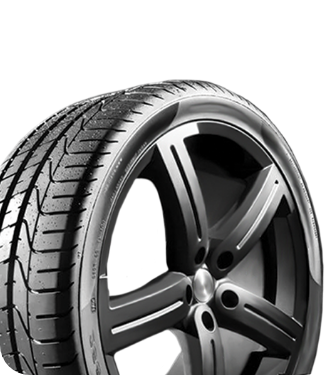

How Overinflating Your Tires Impacts Your Vehicle
Tires |Everyone knows how dangerous it can be to drive on deflated tires, but what about overinflated tires? Below, we’ll explain how overinflating your tires dangerously impacts your vehicle and how to safely let the air out of them if necessary.
Risk of Blowout
Overinflating tires brings many risks to your vehicle, but the most dangerous is increasing the chances of a tire blowout. A tire blowout can occur when there’s too much pressure on the tire, causing the tread to wear too fast and increasing the chance of a puncture.
Overinflating a tire isn’t much different from overinflating a balloon—the more air inside it, the more likely it’ll puncture and pop. However, when a tire pops, it’s extremely dangerous and causes many accidents and collisions as drivers lose control of the vehicle.
Greater Tire Wear & Tear
Another way that overinflated tires impact your vehicle is that it causes the tires to wear out faster. As we discussed, overinflation means excessive pressure on the tire and road—which means the tire is stiffer and will wear down the tread quicker.
Even if the tire doesn’t blow out from this pressure, the degrading of the tread is another severe danger to drivers. A tire’s tread keeps the car attached to the road, and on wet or icy roads, the insufficient tread can cause the driver to quickly lose control and put themselves and other vehicles in danger.
How To Safely Let Air Out of Your Tires
If your car has overinflated tires, how do you let the air out of them? It’s not as easy as removing the cap from the tire’s stem. To safely deflate your tires, you’ll need a flathead screwdriver or another tool that you can use to apply pressure.
Remove the cap from the tire’s stem, and you’ll see a metal pin in the middle. Apply a gentle force to the pin with the screwdriver so it pushes inward—this will slowly let the air out through the stem. Release air methodically and gently—you don’t want to have to inflate them again!
What Pressure Should My Tires Be?
Typically, the recommended PSI for vehicles is anywhere between 32-35 PSI. Some vehicles may be closer to 40 PSI, so check your vehicle’s owner’s manual to find the recommended PSI for your specific car.
Pro Tip: The recommended PSI is also commonly listed on a sticker inside the driver’s door on most modern cars.
Many modern cars have a tire pressure monitoring system that will alert drivers when the tires are outside the recommended PSI range. While these systems are helpful, the sensors can malfunction easily, so it’s still best to manually check and correct your tire pressure regularly.
We hope our guide has helped you understand the dangers of overinflating your vehicle’s tires. If you need tires in Clovis, visit the experts at the RNR Tire Express New Mexico location! We also have RNR Tire Express locations in 27 states, from Florida to Colorado and more!





